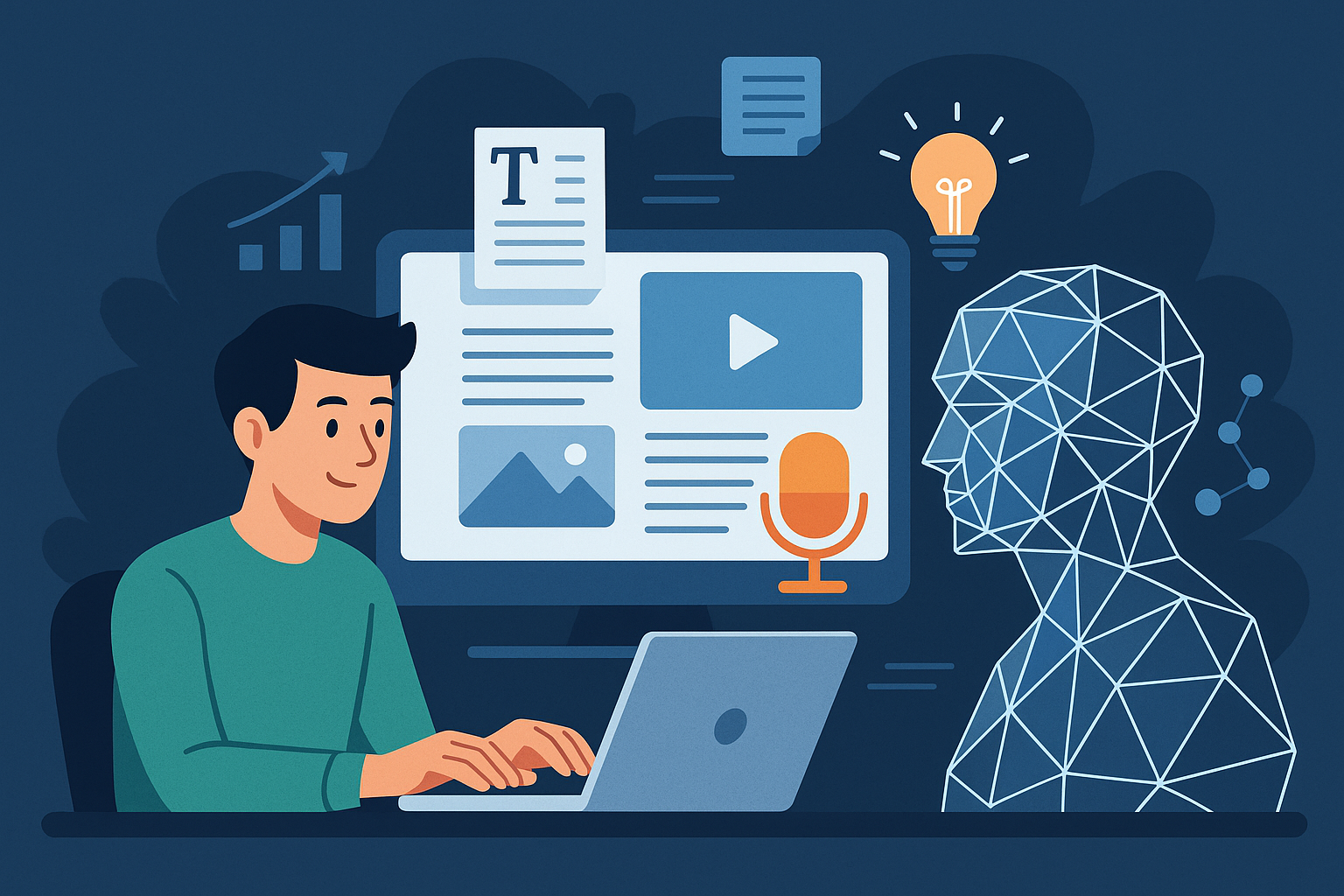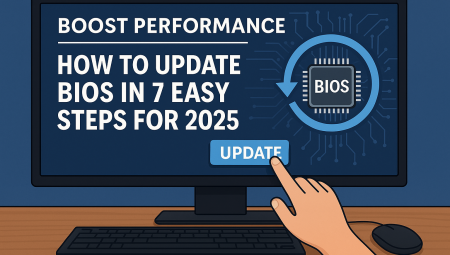Here’s a comprehensive article on Generative AI for Content Creation, optimized for Google search and designed to provide valuable, engaging content for marketing professionals, content creators, and business owners.
10 Powerful Ways Generative AI for Content Creation Will Transform Your Strategy in 2025
Unlock Limitless Creativity: Mastering Generative AI for Content Creation
The content landscape is evolving at warp speed, and if you’re a content creator, marketer, or business owner, you’ve likely felt the pressure to produce more, faster, and with higher quality. Enter Generative AI for Content Creation – a revolutionary force that’s no longer just a futuristic concept but a vital tool shaping our present and future. In 2025, Generative AI isn’t just about automating simple tasks; it’s about augmenting human creativity, opening doors to hyper-personalized experiences, and scaling content production like never before. This in-depth guide will reveal how this cutting-edge technology works and, more importantly, how you can leverage its immense power to redefine your content strategy, stand out from the competition, and achieve unprecedented efficiency.
What is Generative AI for Content Creation?
Generative AI for Content Creation refers to artificial intelligence models capable of producing new and original content across various formats, including text, images, audio, video, and even code. Unlike traditional AI that analyzes existing data or recognizes patterns, generative AI creates. It learns from vast datasets of existing content, understands underlying patterns and styles, and then generates novel outputs that often mimic human-level creativity.
Think of it as an incredibly skilled apprentice that can generate drafts, variations, or entirely new pieces of content based on your specific prompts and parameters. This technology is powered by advanced machine learning techniques, particularly deep learning, and models like Generative Adversarial Networks (GANs) and Transformer models (like those behind large language models – LLMs). Its ability to synthesize information and create de novo content makes it a game-changer for anyone in the content production space.
Why Generative AI is Essential for Content in 2025
The sheer volume of content required to capture audience attention is constantly escalating. A 2024 report by HubSpot indicated that businesses producing content frequently see 3.5x more traffic and 4.5x more leads than those who don’t. Yet, human content creation is time-consuming and resource-intensive. This is precisely where Generative AI for Content Creation steps in.
Beyond just speed and volume, Generative AI offers:
- Scalability: Produce content at a scale previously unimaginable, allowing small teams to compete with larger enterprises.
- Personalization: Create highly tailored content for individual audience segments, driving deeper engagement.
- Efficiency: Automate repetitive tasks, freeing up human creators for strategic thinking and refinement.
- Innovation: Explore new content formats and creative avenues that might be too resource-intensive to pursue manually.
- Cost-Effectiveness: Reduce expenditures associated with extensive manual content creation, particularly for high-volume needs.
As businesses continue to navigate an increasingly competitive digital landscape, the adoption of Generative AI isn’t just an advantage; it’s becoming a necessity to maintain relevance and drive growth.
Key Applications of Generative AI for Content Creation
The versatility of Generative AI for Content Creation is truly impressive, spanning various content types and industries.
1. Text Generation: From Blog Posts to Ad Copy
This is perhaps the most widely recognized application. Generative AI models can produce:
- Blog Post Drafts and Articles: Generate outlines, first drafts, or even full articles on specific topics.
- Marketing Copy: Craft compelling headlines, ad copy, email subject lines, and social media posts.
- Product Descriptions: Create unique and engaging descriptions for e-commerce products at scale.
- Scripts and Dialogues: Draft scripts for videos, podcasts, or even chatbots.
- Summaries and Reports: Condense long-form content into concise summaries or generate basic reports.
2. Image and Visual Content Generation
Beyond text, generative AI is revolutionizing visual content:
- Stock Image Alternatives: Create unique, copyright-free images tailored to specific needs, eliminating reliance on generic stock photos.
- Marketing Graphics: Generate visuals for social media, ads, and website banners with specific themes or styles.
- Concept Art and Illustrations: Aid designers in brainstorming and creating initial visual concepts quickly.
- Personalized Visuals: Produce unique images for hyper-personalized marketing campaigns.
3. Audio and Music Generation
The auditory realm is also ripe for AI innovation:
- Royalty-Free Background Music: Generate unique soundtracks for videos, podcasts, or presentations.
- Voiceovers: Create synthetic voices for narration, audiobooks, or interactive voice responses.
- Sound Effects: Produce custom sound effects for games, animations, or multimedia projects.
4. Video Generation and Editing
While still emerging, AI in video is rapidly advancing:
- Automated Video Editing: AI can identify key moments, trim footage, and even add transitions.
- Synthesized Spokespersons: Generate realistic avatars that can deliver scripts, useful for explainers or marketing videos.
- Short-Form Video Ads: Create multiple variations of video ads for A/B testing and platform optimization.
5. Code Generation and Development
For technical content, AI can assist:
- Automated Code Snippets: Generate boilerplate code, functions, or entire scripts based on natural language prompts.
- Website Design Elements: Create CSS styles, HTML structures, or JavaScript components.
Featured Snippet Optimization: Key Questions Answered
How does Generative AI create content?
Generative AI creates content by learning patterns, styles, and structures from vast datasets during its training phase. When given a prompt, the AI uses these learned patterns to predict and generate new, original content (text, images, audio, etc.) that aligns with the prompt’s instructions and the style it has absorbed, essentially “imagining” new outputs.
What are the benefits of using Generative AI in marketing?
The benefits of using Generative AI in marketing include rapid content scaling, enhanced personalization for target audiences, significant efficiency gains by automating repetitive tasks, reduced content creation costs, and the ability to test numerous content variations quickly. This leads to more engaging campaigns and improved ROI.
Implementing Generative AI in Your Content Workflow
Integrating Generative AI for Content Creation into your workflow requires a strategic approach. It’s not about replacing humans but empowering them.
1. Start with Clear Objectives
Before using any tool, define what you want to achieve. Are you aiming for more blog posts, better ad copy, or unique visual assets? Clear objectives will guide your tool selection and prompt engineering.
2. Choose the Right Tools
The market for generative AI tools is booming. Research tools that specialize in your specific content needs (e.g., text generation, image generation, video editing). Look for user-friendly interfaces, good integration capabilities, and ethical usage policies.
3. Master Prompt Engineering
The quality of AI-generated content heavily depends on the quality of your prompts. Learn to write clear, specific, and detailed prompts that guide the AI effectively. Experiment with different phrasing and parameters to get the best results.
4. Human Oversight and Refinement
Generative AI for Content Creation is a co-pilot, not a replacement. Always review, edit, and refine AI-generated content. Add your unique voice, ensure factual accuracy, and integrate human insights for authenticity. According to a 2025 forecast by Gartner, companies that blend human expertise with AI tools will outperform those relying solely on AI by a factor of three in content effectiveness.
5. Establish Ethical Guidelines
Address potential biases in AI outputs, ensure proper attribution if AI models are trained on specific artists’ works, and be transparent with your audience when AI is used in content creation.
Pro Tips for Maximizing Generative AI for Content Creation
- Batch Processing for Efficiency: Use AI to generate multiple variations or drafts in batches. This is incredibly efficient for A/B testing headlines, ad copy, or social media posts.
- Leverage AI for Brainstorming: Use AI as a brainstorming partner. Give it a topic and ask for 10 unique angles or outlines. This can kickstart creativity when you’re facing writer’s block.
- Hyper-Personalization at Scale: Feed your AI model specific audience segment data to generate highly tailored email sequences, product recommendations, or ad creatives that resonate deeply.
- Content Repurposing on Steroids: Transform a long-form article into a social media thread, a video script, and several visual quotes using AI, dramatically extending your content’s reach.
- Trend Spotting and Idea Generation: Use AI to analyze vast amounts of data for emerging trends or niche topics that your audience might be interested in, giving you a competitive edge.
- Multilingual Content Expansion: Instantly translate and localize content while maintaining tone and context, opening up new markets efficiently.
Frequently Asked Question (FAQ)
Is Generative AI going to replace human content creators?
No, Generative AI for Content Creation is unlikely to fully replace human content creators. Instead, it acts as a powerful tool that automates repetitive tasks, enhances efficiency, and augments creativity. Human oversight, strategic thinking, emotional intelligence, and unique brand voice remain crucial for creating truly impactful and authentic content that resonates with audiences.
What are the ethical concerns with Generative AI in content creation?
Ethical concerns include potential biases in AI-generated content (stemming from biased training data), issues of originality and copyright, the risk of generating misinformation or “deepfakes,” and the need for transparency with audiences about AI-generated content. Responsible development and usage guidelines are essential to address these concerns.
How can small businesses afford Generative AI tools?
Many Generative AI for Content Creation tools offer free tiers or affordable subscription models, making them accessible even for small businesses. Focusing on specific needs (e.g., text generation for blog posts) and starting with entry-level tools can provide significant value without a large upfront investment. Prioritizing tools that offer strong ROI for specific content types is key.
Your Content Future, Powered by AI
The landscape of content creation is no longer defined by manual effort alone. Generative AI for Content Creation is here to empower you, enabling unprecedented levels of efficiency, creativity, and personalization. By embracing this technology strategically, you can not only meet the ever-growing demand for content but also elevate your brand’s presence and engagement in ways previously unimaginable. The future of content is collaborative – a synergy between human ingenuity and artificial intelligence.
How are you planning to integrate Generative AI into your content strategy? Share your thoughts and experiences in the comments below!



